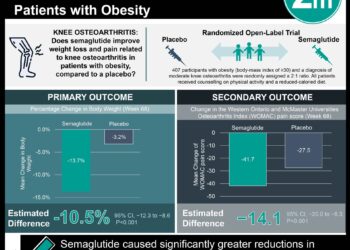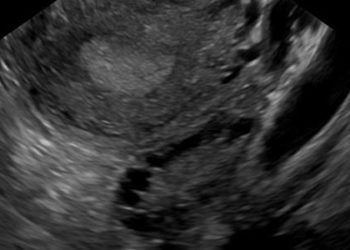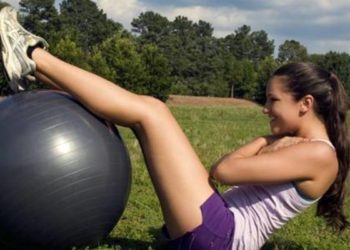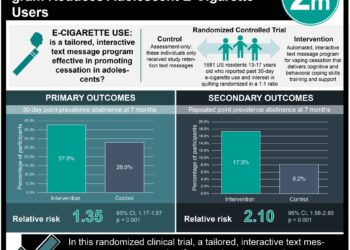Wellness Check: Exercise
2 Minute Medicine is pleased to announce that we are launching Wellness Check, a new series dedicated to exploring new research evidence focused on wellness. Each week, we will report on articles examining different aspects of wellness, including (but not limited to) nutrition, sleep, reproductive health, substance use and mental health. This week, we explore the latest evidence-based updates in exercise.
Rising from a chair is an important tool for independent living
1. The power thresholds to complete the sit to stand test differ for men and women and increase linearly with height.
2. Participants who did not meet the power threshold for the sit to stand test had greater disability in activities of daily living.
Evidence Rating Level: 2 (Good)
Being able to rise from a chair unassisted is one of the most important requirements for independent living. The sit-to-stand (STS) test is often used as a tool to assess a patient’s ability to do accomplish this. Currently, no previous study has identified the minimum levels of relative power needed to rise from a chair. Consequently, the present study sought to identify this threshold in older adults. Furthermore, this study aimed to assess the prevalence of mobility limitations and disability in activities of daily living in older people who have relative muscle power below the minimal thresholds.
The present retrospective analysis included 5 European cohorts (11 583 participants, age range 60-103 years). Inclusion and exclusion criteria were further described for each cohort. Four cohorts measured STS performance using the 30-second STS test whereas one used the 5-rep STS test. Muscle power was assessed by means of the STS muscle power test.
Results showed that the minimal threshold of relative muscle power to complete 5 STS repetitions were 1.1 and 1.0 Watts/kg for older men and women respectively. The threshold to complete one STS repetition was 0.3 Watts/kg in both sexes. Furthermore, all participants with relative power below the 5-rep threshold had mobility limitations and a large proportion showed disability in activities of daily living. However, this study was limited by the use of a standardized chair height (0.43-0.45m) which may have influenced the threshold of relative muscle power. Nonetheless, this study provided strong evidence in support of the prevention of mobility limitations in older people through muscle strengthening above the minimum power threshold.
Exercising during the postpartum period may not induce additional weight loss
1. Exercise was not associated with additional weight loss in lactating women without the addition of calorie restriction.
2. Exercise was positively correlated with decreased bone loss and improved body composition.
Evidence Rating Level: 2 (Good)
The postpartum period represents a time where many women regain interest in following an old (or new) exercise regimen. Few studies have examined the effects of exercise during the postpartum period, especially for breastfeeding mothers. As a result, the present review aims to determine the effects of exercise on weight loss, body composition and bone mineral density in lactating women.
This integrative review included 12 studies out of 179 identified studies from 1990 and 2019. The study populations included the United States, Sweden and England. Studies were included if they studied women who were breastfeeding at the beginning of the trial, had an exercise component, and had outcomes of: weight, body fat percentage and/or bone mineral density. Statistical analysis was not performed in this study. Outcomes assessed the effect of exercise amongst lactating women on weight loss, bone mineral density, and body composition.
The results of this study demonstrated that exercise (without calorie restriction) in the postpartum period was not associated with additional weight loss. Conversely, it was found that exercise was positively correlated with decreased bone loss and improved body composition (reduction of body fat while preserving fat free mass). However, this study was limited by the varying definitions of breastfeeding across the included studies and the fact that weight was self-reported. Nonetheless, the present study highlights important benefits that may be conferred through exercise in postpartum lactating women despite the lack of observed weight loss.
Benefits of before-school physical activity programs currently have mixed evidence
1. In this study, limited evidence suggested that before school physical activity (PA) programs were positively associated with improved daily physical activity levels.
2. Associations between before school PA programs were indeterminate for physical health, learning and psychosocial outcomes.
Evidence Rating Level: 1 (Excellent)
Physical activity (PA) programs in schools play an important role in overall wellness of children and adolescents. To date, most research on PA outside of school hours have focused on the after-school period; however, before-school PA programs also have the potential of not only having PA benefits, but also aiding cognition and learning. Since the evidence thus far is limited, the aim of the present systematic review was to evaluate the impact of before school PA programs on children’s PA levels, health indicators and learning outcomes.
The present systematic review included 13 articles representing 10 unique studies between 2012-2020. Studies were included if they included developing children and/or adolescents, examined school-based PA programs delivered before the school day and its association with PA behaviors, physical health, learning behaviors and/or psychosocial well-being. Studies which examined before-school sport or active transport were excluded. Risk of bias was assessed using the Cochrane Collaboration Tools Revised Cochrane Risk of Bias Tool for Randomized Trials (RoB2) and Risk of Bias in Non-randomized studies of Interventions (ROBINS-I). Assessment of the evidence was done using the Grades of Recommendation, Assessment, Development and Evaluation (GRADE).
Results demonstrated that although evidence was limited, there was an association between before-school PA programs with daily PA levels. Conversely, associations were indeterminate for physical health, learning related and psychosocial outcomes. However, the present study was limited by the high risk of bias across multiple studies. Nonetheless, this study represented the first in examining the effectiveness of before school PA programs on multiple health outcomes and highlighted key areas for further research.
Systematic cardiac screening may not be required amongst junior competitive athletes
1. In junior athletes recovering from SARS-CoV-2 infection, cardiac complications were uncommon (3.2%) and not associated with malignant ventricular arrhythmias.
2. In junior athletes who were asymptomatic or had mild symptoms after SARS-CoV-2 infection, cardiac screening was unnecessary.
Evidence Rating Level: 2 (Good)
Cardiac manifestations after SARS-CoV-2 infection, though rare, have been shown to occur especially in adolescents and young adults. Viral replication can be accelerated during exercise and as a result there are currently no clear guidelines on the best approach to return to play (RTP). Therefore, the objective of this study was to investigate the prevalence of cardiovascular complications following SARS-CoV-2 infection in junior competitive athletes and the effectiveness of a cardiac screening protocol for a safe RTP.
This prospective multicenter study included 571 non-professional junior competitive athletes (7-18 years) with previous asymptomatic or mildly symptomatic SARS-CoV-2 infection. Athletes were excluded if they had a severe infection or were evaluated >45 days after the negativisation of their nasopharyngeal swab. Mann-Whitney test and the unpaired t-test were used to assess between-group significance (asymptomatic vs. symptomatic and younger vs. older athletes). All athletes underwent a clinical profile screen, twelve-lead resting ECG and echocardiography.
Results demonstrated pericardial involvement was found in 3.2% of athletes with no complex/life threatening arrhythmias or myocardial inflammation. Furthermore, it was deemed that cardiac screening for RTP using the above measures was unnecessary. However, the present study was limited by the absence of a baseline echocardiogram which limited the attribution of cardiac findings to SARS-CoV2-infection. Nonetheless, the present study addressed an important gap in the literature such that cardiac testing should likely be reserved for athletes who display cardiac symptoms, ECG abnormalities, or uncommon arrhythmias.
Image: PD
©2021 2 Minute Medicine, Inc. All rights reserved. No works may be reproduced without expressed written consent from 2 Minute Medicine, Inc. Inquire about licensing here. No article should be construed as medical advice and is not intended as such by the authors or by 2 Minute Medicine, Inc.






